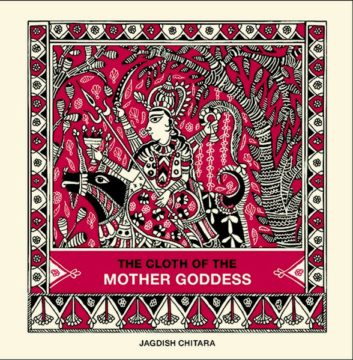Hand block-printed on textile, this limited-edition artists’ book consists of a sequence of folding panels, designed to invoke pre-modern – particularly Asian – traditions of bookmaking. At the same time, the panels recall and recreate a Mata-Ni-Pachedi – the ritual ‘Cloth of the Mother Goddess’ – and tell the story of its origins.
The textile book is accompanied by a film on the artist and his art tradition. The tactility of the book, invoking the labour and craft that have gone into its creation, is offset by the digital documentary which brings in context and history; together, the juxtaposition of the two approaches expands the frontiers of the book form, while deepening the viewer’s enjoyment and understanding of the art tradition.
The images featured in the book have been painted by Jagdish Chitara, who belongs to the Waghari community of artisans from Gujarat in western India. Poor and marginalised, they paint and block-print votive textiles for other so-called outcaste communities, equally disenfranchised in the Hindu caste hierarchy. Worshippers who are barred from entering temples offer a painted image of their particular guardian goddess to herself, in the form of a textile shrine.
This poignant tradition, deemed low, in fact expresses a sublime conception of the power of art: gifting a piece of creation to the creator is considered the highest form of worship.
- Veröffentlicht am Dienstag 31. Mai 2016 von TARA BOOKS Pvt. Ltd.
- ISBN: 9789383145317
- 14 Seiten
- Genre: Hardcover, Kunst, Softcover
